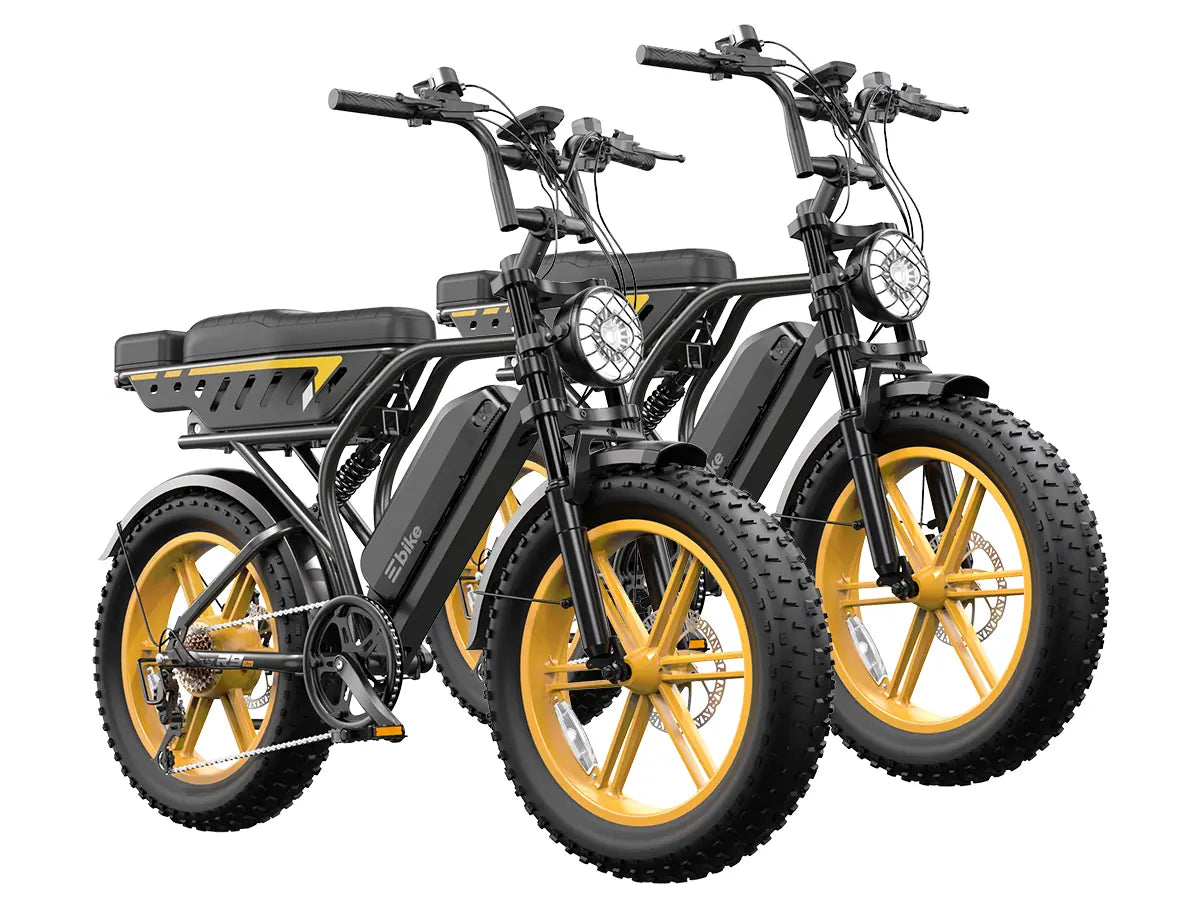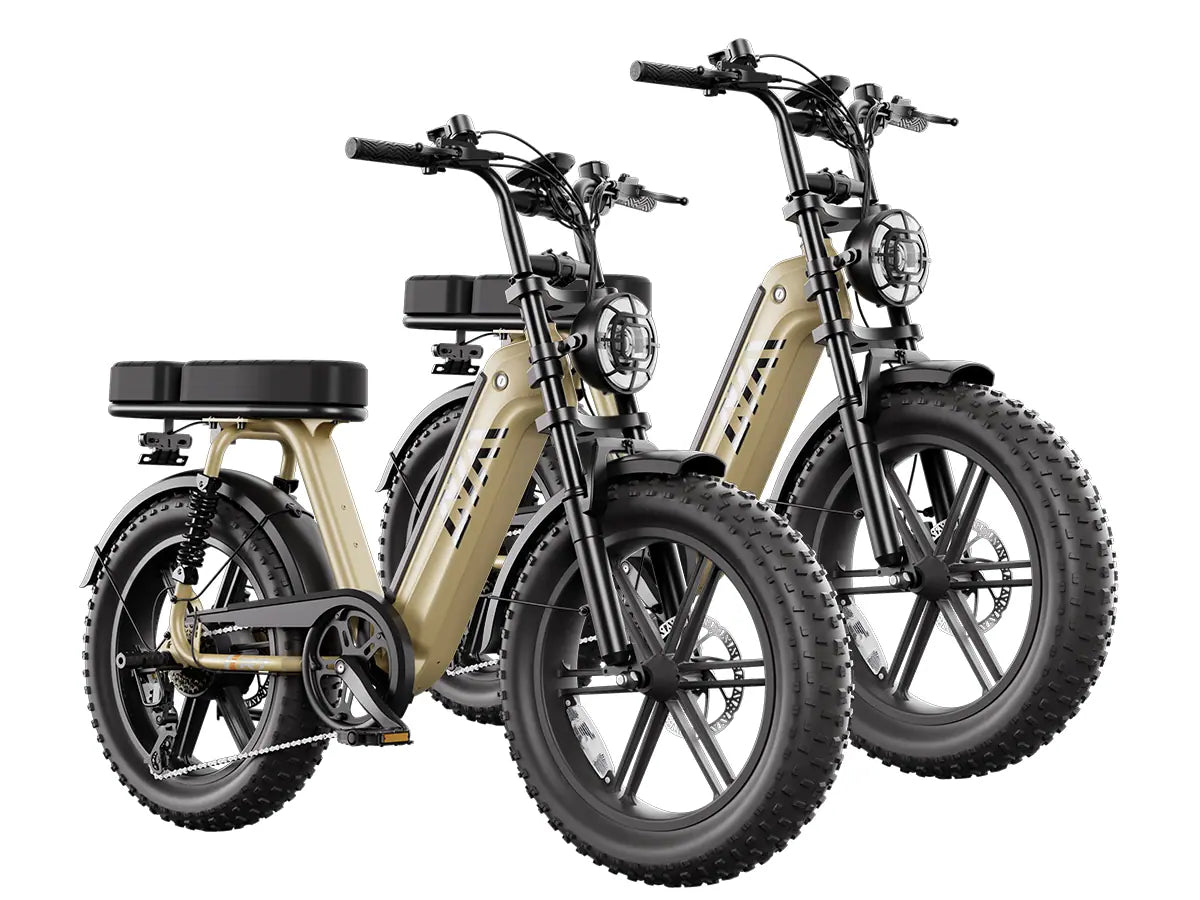An e-bike, or electric bike, is a bicycle equipped with a motor, battery, and control system that assists pedaling, making travel easier across varied terrains. E-bike users enjoy extended range, reduced effort, and flexible commuting. Models like TST EBike offer high-quality options for daily journeys and rugged routes, answering the demand for efficient, electrified mobility.
What is an e-bike and how does it function?
An e-bike fuses pedal-driven movement with electric propulsion. At its core, an e-bike consists of a motor, a rechargeable battery, and a controller that synchronizes pedal and electric input. Unlike solely manual bikes, an e-bike harnesses pedal-assist or throttle modes to reduce fatigue and multiply distance. Riders can activate the electric boost for hill-climbing, navigating traffic, or maintaining speed with minimal effort.
Chart: Main E-bike System Components
| Component | Function |
|---|---|
| Motor | Provides propulsion assist |
| Battery | Stores and delivers electric power |
| Controller | Regulates power flow and modes |
| Sensor | Detects pedaling or throttle input |
| Display | Shows speed, battery, assist level |
How do e-bikes compare to traditional bicycles?
E-bikes transform the cycling paradigm by offering scalable assistance on demand. Where conventional bicycles depend purely on human effort, e-bikes give users the option to climb hills, accelerate, or extend rides with electric support. They are typically heavier due to their batteries and motors, but compensate with effortless mobility. E-bikes welcome more users—commuters, older adults, or those seeking longer rides—without sacrificing the freedom and exercise benefits of cycling.
Which types of e-bikes exist and what are their intended uses?
The e-bike market encompasses diverse models, each tailored to unique riding scenarios. Commuter e-bikes favor moderate motor power, slim frames, and accessory mounts for daily travel. Mountain and off-road e-bikes, exemplified by TST EBike’s 26-inch offerings, boast fat tires and robust suspension for tackling sand and snow. Folding e-bikes prioritize urban convenience and portable storage. Hybrid e-bikes blend comfort with versatility, while 27-inch TST EBike variants target fast city trips and mountain ascents.
Chart: E-Bike Types and Terrain Suitability
| Type | Wheel Size | Terrain/Use |
|---|---|---|
| Commuter | 27-inch | Paved roads, urban travel |
| Mountain/Off-road | 26-inch | Trails, snow, sand, rugged paths |
| Folding | 20–26 inch | Urban, limited storage, multi-modal |
| Hybrid | 27-inch | Mixed roads and trails, versatility |
How do motor power and battery capacity affect e-bike range?
Motor wattage and battery amp-hour capacity define the muscle and stamina of an e-bike. A higher-wattage motor (e.g., 500-750W) ensures brisk acceleration and better hill-conquering. Larger batteries (e.g., 48V 14-20Ah) offer longer riding range, sometimes up to 80 miles on one charge, varying by terrain, load, and assistance level. TST EBike’s selection embodies balanced power and endurance to suit everyday use or all-terrain exploration.
What riding modes and smart features do modern e-bikes provide?
E-bike systems are driven by advanced sensors and controllers. Pedal Assist Systems (PAS) sense input and deliver proportionate support, with multiple levels tailored to the rider’s energy and the journey’s demands. Throttle options let users cruise with zero pedaling. Digital displays relay speed, trip distance, power use, and error codes. Some TST EBike models feature integrated lights, USB charging, and mobile app connectivity for an interactive cycling experience.
Why is proper maintenance important for e-bikes?
While e-bike frameworks share many components with regular bikes, their electric systems require additional care. Battery health depends on regular charging and safe storage; the motor and controller should stay dry and dust-free. Periodic software updates enhance performance and safety. Regular inspections of brakes, drivetrain, and tires—especially for off-road 26-inch and commuting 27-inch variants from TST EBike—guarantee longevity and reliability.
How are e-bikes impacting transportation and sustainability?
E-bikes offer a transformative solution in the battle against urban congestion and air pollution. Substituting cars with e-bikes slashes emissions and noise, making city life cleaner and calmer. E-bikes like TST EBike’s lineup, supported by affordable, high-quality builds and global reach, represent forward-thinking transport that inspires sustainable living and reshapes how communities move.
Where can riders purchase reliable e-bikes and how do brands like TST EBike stand out?
Reliable e-bike acquisition starts with reputable dealers or direct-from-brand stores offering product transparency, expert support, and solid warranties. TST EBike, with roots in California and operations in over 10 countries, stands for consumer-informed evolution, best-in-class quality control, and after-sales assurance. Their 26-inch and 27-inch model range spans all riding ambitions, backed by over 20 offline outlets and strong consumer loyalty.
Buying Tips
Selecting an e-bike demands clarity of purpose—identify if you’ll commute, tackle rough terrain, or require portability. Check motor and battery specs for performance that matches your daily needs. Choose frame and wheel size for comfort and control, especially if alternating between TST EBike’s 26-inch and 27-inch models. Prioritize brands committed to feedback-led design, warranty, and customer support. Test ride if possible, and compare features—adjustable PAS, display, and integrated lighting—to find your ideal match.
TST EBike Expert Views
“E-bikes are ushering in a new era of transit freedom and environmental awareness. By harnessing user feedback, TST EBike has refined its lineup for real-world performance—from sand-dominating 26-inch wheels to agile 27-inch commuter frames. Their approach blends innovation, durability, and global reach, giving every e-bike rider a dependable, tailored solution for every urban or wild escape.”
FAQ
What is an e-bike?
An e-bike is a bicycle equipped with a motor and battery that assists pedaling, enabling easier, longer, and faster rides over various terrains.
How does an e-bike differ from a traditional bike?
E-bikes offer electric power assist in addition to manual pedaling, allowing riders to conquer hills, cover greater distances, and reduce effort compared to regular bicycles.
Which e-bike wheel size should I choose?
A 26-inch wheel is ideal for sand and snow, while a 27-inch wheel is optimal for city commuting and mountain biking, as found in TST EBike models.
How far can an e-bike travel on one charge?
Most e-bikes can cover 30–80 miles per charge, depending on the battery size, assistance level, and riding conditions.
Where can I buy a dependable e-bike?
Look for authorized dealers or established brands like TST EBike, which offer wide distribution, strong warranties, and support for consumers worldwide.




























Leave a comment
All comments are moderated before being published.
This site is protected by hCaptcha and the hCaptcha Privacy Policy and Terms of Service apply.